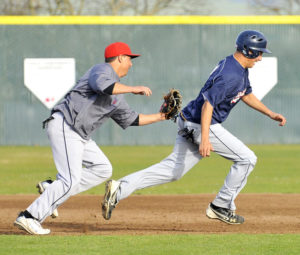Using Tactical Games in Baseball Practice
It is very easy for basketball, soccer, and football coaches to create practices that closely resemble playing the game. They are able to keep many players involved, because during virtually every play in their games, almost every player is active.
The same cannot be said for baseball. Players have responsibilities on every play, such as knowing the situation should be ball be hit to them, or backing up a base, but with the exception of the catcher, pitcher, and first basemen, the possibility exists that a player may go through an entire game without touching the ball defensively.
Unfortunately, not many baseball practices resemble this game play. If we just scrimmaged all the time, you could have a three hour "practice" where players got just a few at bats, and might not get any work in the field.
To combat this many coaches use the "mass repetition" approach to practice. If I hit them twenty straight ground balls, they will get better at fielding ground balls. True. Then the game comes and they can't perform. Why?
They can't perform because their practice didn't closely resemble anything that happens in game play. In practice they got twenty straight ground balls and there was no runner, no pressure, and nothing on the line.
In the game, there is a runner running down the line. Sometimes the runner is fast, sometimes the runner is slow. There are fans in the stands. If you make a mistake, you don't get another one hit right to you.
It is physically and mentally a different game than what players see in practice. Because of this, coaches need to create practices that are fast paced, challenging, and closely mimic game play.
Rule number one for creating such a practice is to avoid lines in your practice. We use short lines (two or three players) to give our athletes rest between activities. If the lines in practice are much longer than three players, boredom will begin to set in and only those who truly love the game will continue playing.
Another option to keep all players involved is to employ the use of tactical games. These games teach baseball through competitive, controlled situations where players play a structured game to learn a skill or tactic. Below are two examples of tactical games, one for players of all ages, and one for players over 14 years old.
For all ages
Set up two sets of cones, each set is the same distance from each other. The distance between the sets can be adjusted depending on the age and skill of the player. A good starting distance for a 14U player would be between 100 feet and 150 feet. (see set up below)
X X
T <-- 100-150 Feet --> T
X X
This game can be played one on one, or in teams of two. Each team hits a ball off the tee toward the other team (it is a good to give each team gloves to field the ball as it comes at them). Their goal is to hit the ball between the two cones, or hit the tee. If they hit the ball between the cones, they get one point. If they hit the tee, they automatically win, and the game restarts. This game teaching a line drive, up the middle swing. You will be amazed how players who may be casting their hands and consistently yank the ball to the pull side, adjust their swings in order to compete. Either play a specified number of swings, or to a point total.
Over 14 - Small ball game
Divide the team into smaller teams of four to six (no less than four). The numbers will dictate how you handle pitchers and catchers. One option is to have teams of six where each has a pitcher and catcher. Another option is to have a few pitchers and catchers who play on their own team offensively, but only pitch and catch on defense. Allow the teams to create their own signs and strategy. Each team will have players as base coaches (wearing helmets) and will coach themselves.
Teams will set up defensively with only an infield. The defensive team is not allowed to play any player closer to home plate than the baselines until the offensive team shows bunt. Any ball hit out of the infield on the fly is an automatic out. The offensive team can bunt, steal, hit and run (as long as they don’t hit the ball out of the infield on the fly), or squeeze bunt. Their objective is to get runners on, move them over and get them in. We usually give each offensive team six outs and clear the bases after the first three to keep the game moving quickly.
The only time we reward our players for hitting the ball out of the infield on the fly is if there is a runner on third with less than two outs, if they hit a deep flyball, they are still out, but we allow the runner from third to score.
Feel free to modify the rules to meet your needs. We have started with a runner on first or second with nobody out, but it is fun to watch them try to get on base by bunting for a hit or hitting a hard groundball through the infield.
This game gives athletes the chance to make decisions, stay constantly involved (we usually have three teams of six and have the team that is not hitting or fielding working on hitting drills), and work on all offensive and defensive aspects of the small game.
[wp_ad_camp_4]
All Ages - Infielders vs. Baserunners
This is a very simple tactical game, but it simulates a play that players very rarely see in practice, but see all the time in the game.
Take some outfielders, catchers or extra infielders and put them in the left handed batters box. A coach hitting fungo will be in the right handed batter's box (left handed coaches, you're on your own!). When the coach makes contact with the ball, the baserunner takes off to first.
Simple right? It allows you to hit the ball to any position on the field and simulate a number of situations including forehands, backhands, slow rollers, routine plays, bunts, tweeners, and much more.
I have incorporated a ton of new and innovative drills in into our infield practice, but there is no drill that gets as much out of the players as this tactical game. It teaches the players to react and do so under pressure.
Incorporating tactical games is the best method you can use to keep practices fun and exciting while teaching players to compete and play the game.
For more great baseball coaching info like this, get a trial membership to our Cornerstone Elite Members only area and get:
-
Over 50 tactical games to make practices more competitive and game-like
-
Over 20 hitting drills that develop a powerful, consistent swing
-
Documents so you stop guessing at your team's performance and start measuring it.
-
Weekly insider video/audio tips for members only
-
Daily dozen pitching drills for explosive consistent pitching deliveries
-
Six online courses and counting
-
Generating Offense and Hitting
-
Coaching Methods and Pedagogy
-
Skills and Drills
-
Developing Dynamic Outfielders
-
Playing Great Team Defense
-
Small Ball for Big Innings
-
-
Constantly updating material
-
Much, much, more... click here to get a SNEAK PEEK
Get started today with a trial membership for just $1! 100% money back guarantee!
More from my site
 My Goal Setting Process for 2015
My Goal Setting Process for 2015 The Top 10 Things Every Pitcher Must Do
The Top 10 Things Every Pitcher Must Do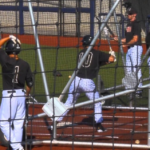 CCA Podcast 069: Helping Matt transition his team to his hitting philosophy
CCA Podcast 069: Helping Matt transition his team to his hitting philosophy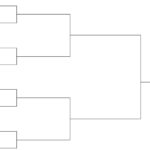 CCA Podcast 095: Setting your team up for success in a single elimination tournament
CCA Podcast 095: Setting your team up for success in a single elimination tournament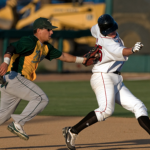 CCA Podcast 143 – How to break up your practice time
CCA Podcast 143 – How to break up your practice time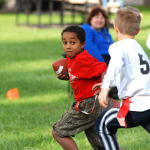 Disheartening Story About Youth Coaches
Disheartening Story About Youth Coaches
 Posted by Kyle Nelson
Posted by Kyle Nelson- Posted in Baserunning, Infield, Practice Organization
 Feb, 18, 2013
Feb, 18, 2013 No Comments.
No Comments.
Elite members login here
Check out what’s New/Hot!
Recognizing, Diagnosing, and Fixing Common Hitting Flaws eCourse The 3 metrics we tested on Blast motion sensors this year Sneak Peek Inside an Elite Q and A The batting practice continuum Elite Member’s area table of contents 50+ “Chaos” hitting drills
5 sample Chaos hitting drills FREE
Mental Skills and Culture Building The hitting pyramid Welcome Elite Member, Trey! Ideas for a pitcher first practice 12 week bat speed improvement plan Make plans this offseason to have your team playing their best baseball at the end of the year” Top 5 hitting drills to translate practice skill to game performanceHow we used Blast Motion sensors with a team in 2019
What to do if your hitters are overmatched Welcome Elite Member, Tommy! Setting your baserunners up for success Welcome Elite Member, Mike! A consulting call with Elite Member Matt FREE Web Clinic: Developing Athletic, Consistent, Extraordinary Infielders
 Coach Kyle Nelson
Coach Kyle Nelson